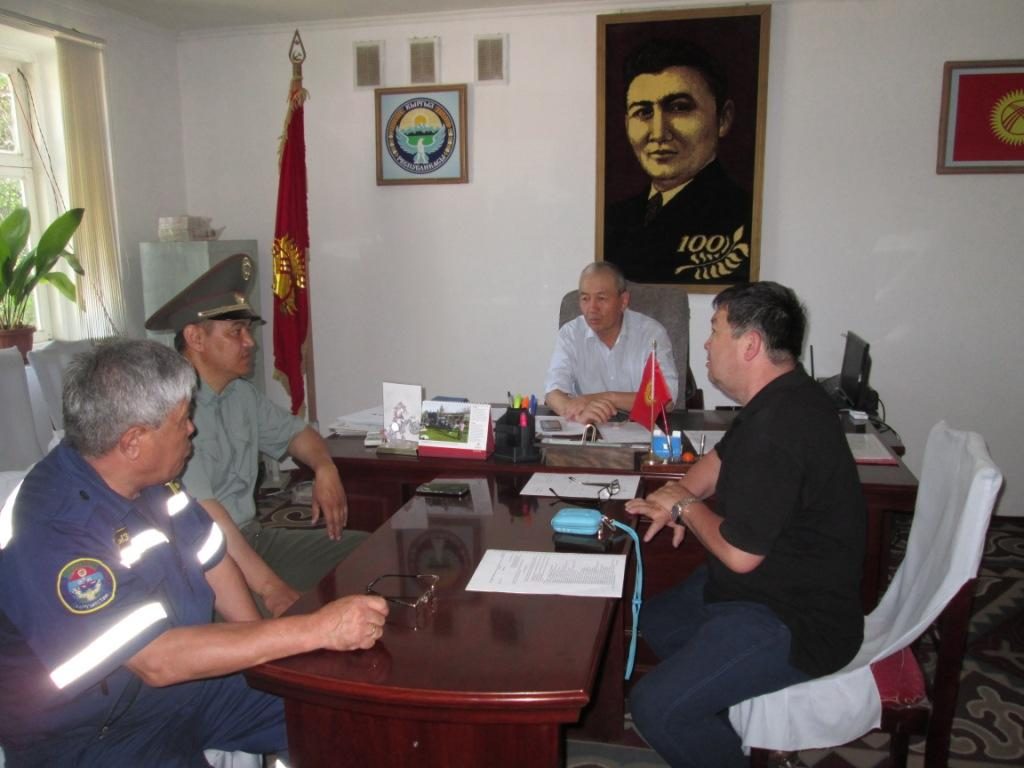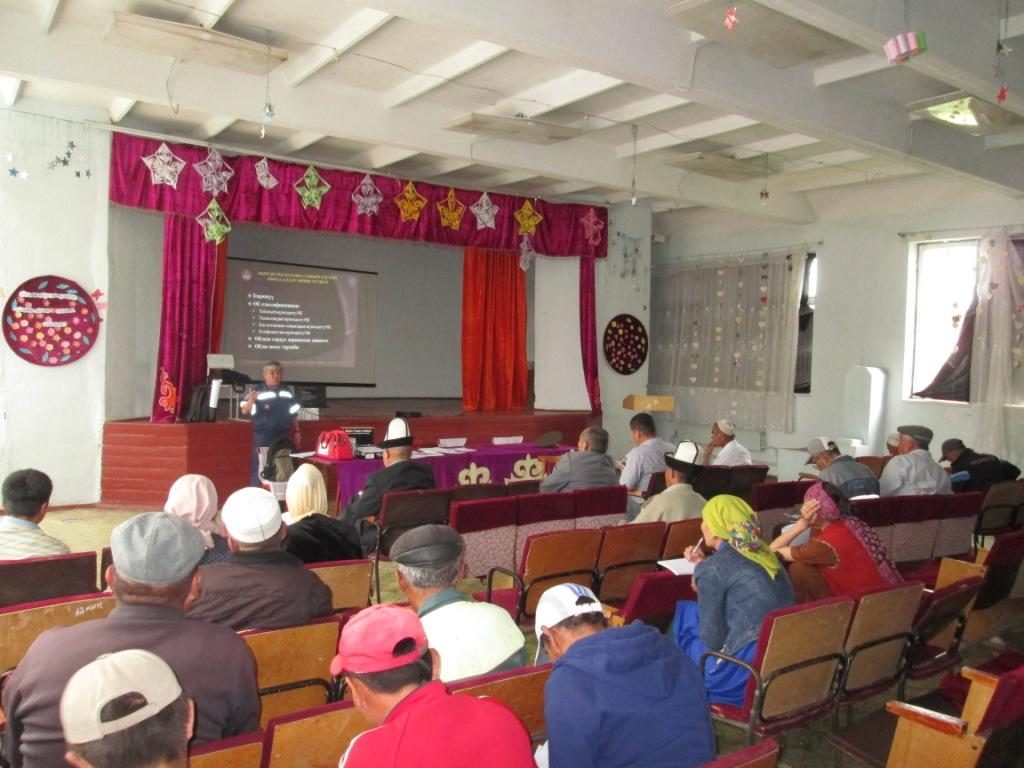2 trainings on “Disaster Risk Reduction and Security on operation areas of OSCE”

On May 17-18, 2017, two trainings were held on the project “Disaster Risk Reduction and Security in the OSCE Area” in the border villages of Kulunda Of Batken region and Jamaat Ovchi Kalach of Sughd region within the framework of the Public Fund “Environmental Development”. Civil Protection Commission participate in the training, members of the current of the Kulunda Aiyl Aymak of Leilek rayon were invited. The members of the current Civil Protection Commission for the Kulunda Aiyl Aymak of Leilek district were invited to the training.
After getting acquainted with the participants of the training, the trainer explained the goals, objectives and training program, identified the participants’ expectations, with the help of general discussion, determined the rules of the seminar, thus creating a favorable psychological atmosphere for the work, then the participants filled in the preliminary tests. Then they were given information about donors and project, where information was given about the activities of the Public Fund “Environmental Development” in the field of disaster risk reduction.

Currently, in the mountainous regions, one of the urgent problems is the problem of resettlement of the population living in especially dangerous areas. Relevant specialists of the Ministry of Emergency Situations of the Kyrgyz Republic issued resettlement orders, but people still live in these localities. The next problem is a shortage of the local budget, some ayilm aimaks are on state subsidies, therefore, some ayilm aimaks do not provide funds for preventive work from the local budget. The reason for this may be unpreparedness and the level of education of deputies of the local kenesh.
Further development of the system for training officials and civil protection specialists of local government bodies should be based on the following principles:
- Encourage more active participation of local authorities in the field of emergency prevention;
- Identify the most active local government bodies in the implementation of the state policy in the field of disaster risk reduction with view to encouraging and disseminating their activities;
- Promote the use of best practices and new ways to protection of the population and territory from emergencies
- Stimulating the activities of ayil aimaks in creating safe living conditions for the population, improving the appearance of the village, attracting investments, improving engineering and sanitary and epidemiological conditions.

After carrying out the training on the work of the District Commission for Civil Protection (CCP), its participants received knowledge and supplemented them with new data and changes on the following topics:
- Have gained additional knowledge of legislative and regulatory acts dealing with disaster risk reduction issues, as well as the rules and procedures of the CCP;
- Acquainted with the State system for Civil Protection;
- Received a general concept of emergencies;
- Received knowledge of the functional responsibilities of the DSC members;
- Methods, procedure and rules for preparation of emergency rescue and other urgent work in emergency zones;
- Received the basic concepts of the rules of behavior in the face of various types of emergencies.

Speeches and participation in discussions indicate the participants’ assimilation of the topics provided. The level of knowledge of the training participants increased, expanding their knowledge of natural disasters, preventing and reducing potential risks of natural disasters, and quickly assessing the situation for making decisions on emergency response to emergencies. Participants of the training noted the high professionalism of trainers, and also expressed special gratitude to the Public Fund “Environmental Development” for organizing and financing these trainings. They also expressed their views on the continuation of the population living in remote border areas, since many people, due to lack of full-fledged information, still continue to live in especially dangerous areas.
More details of the training material can be found on the documents below:




























